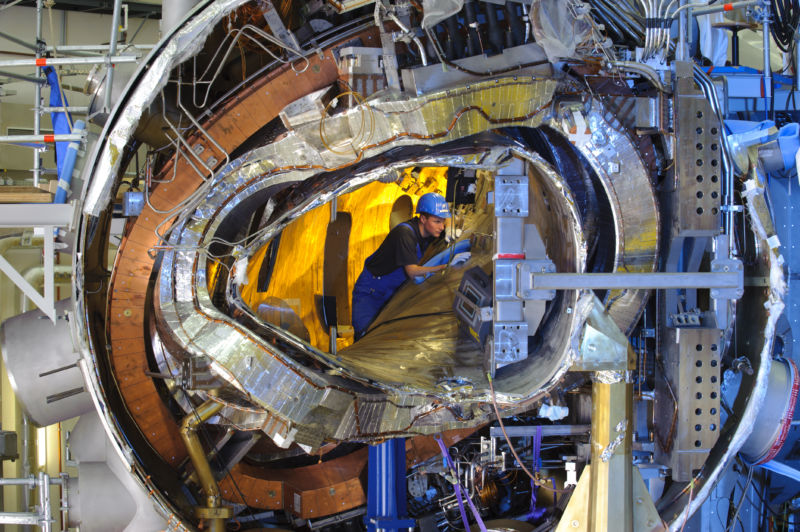Stellarator’s plasma results show a triumph of engineering and modeling

Enlarge / The plasma vessel has a shape that mimics that of the magnetic field. (credit: Max Planck Institute for Plasma Physics)
Many moons ago, Ars was introduced to the Wendelstein 7-X stellarator (W7-X), an experimental fusion concept. At the time, W7-X-the world's largest stellarator-had just completed some warm-up tests and had been shut down to install more bits and pieces. That installation is not yet complete, but the results from some of those early runs are being analyzed, and they look good. The scientists may not be cracking champagne bottles, but they are certainly drinking boutique beer in celebration of the agreement between theory and experiment.
Banging rocks together to create bigger rocksAll of the elements heavier than hydrogen are the result of fusion. To create a heavier element through fusion, you first strip all the electrons away from two lighter atoms and then force the two nuclei together. That is difficult, because they are both positively charged and repel each other vigorously. But if you succeed in getting the nuclei to bang together, they may stick, creating a heavier nuclei.
In doing so they release energy. That energy powers the Sun, and we hope that local, slightly smaller versions might someday supply electricity.
Read 16 remaining paragraphs | Comments